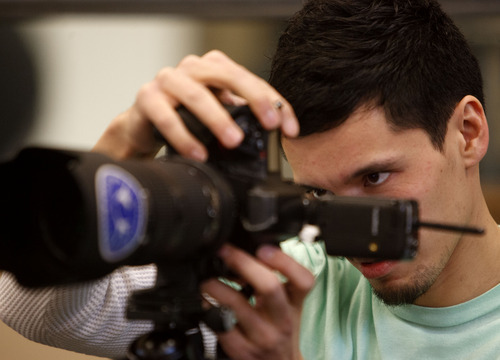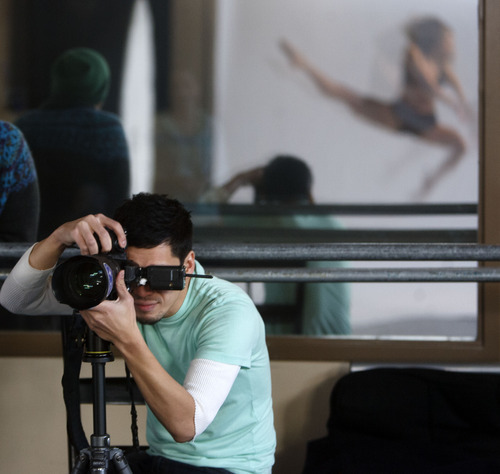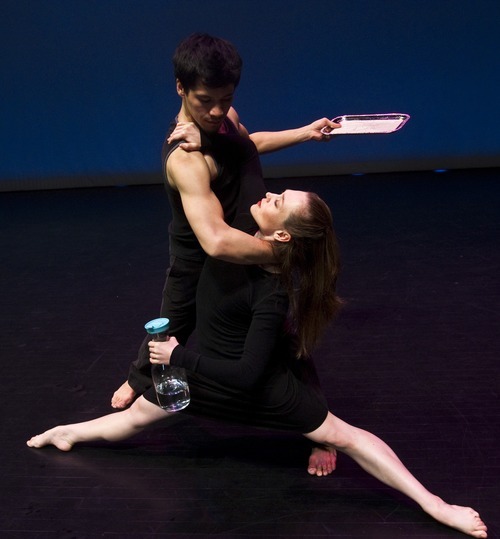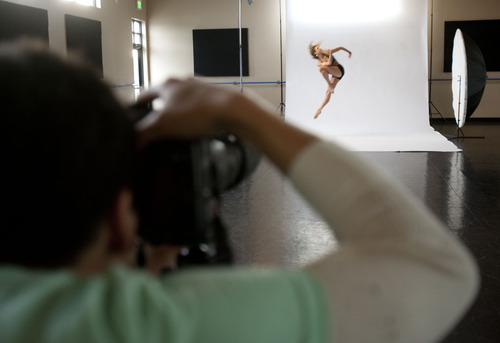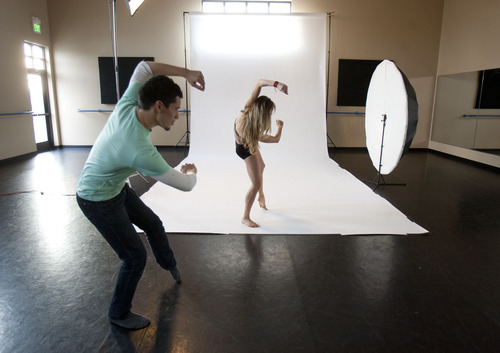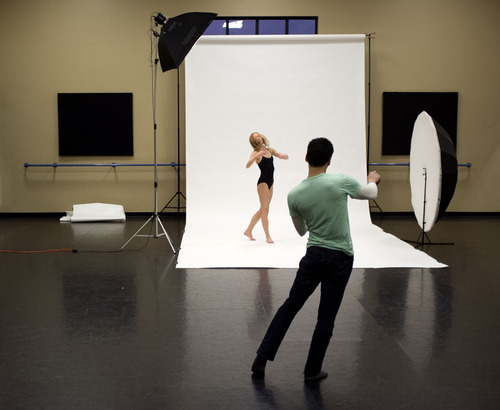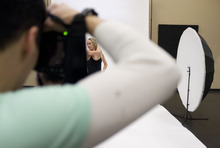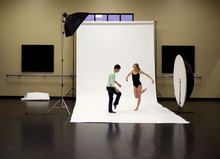This is an archived article that was published on sltrib.com in 2012, and information in the article may be outdated. It is provided only for personal research purposes and may not be reprinted.
Dancers in Chris Peddecord's photographs look as if they have been suspended in air. The effect is so dramatic that viewers might be tempted to look for evidence of digital alterations, which they won't find.
In fact, Peddecord doesn't alter, enhance or retouch his photographs, and mostly shoots his subjects from 20 or 30 feet away. "The last thing I want is for people to look at the photo of a dancer and wonder about me or my technique as a photographer," Peddecord said. "What you see is what has actually occurred in the studio. It is all in the preparation."
That's in contrast to most dance photography, which begins at the performance level when a photographer shoots a dress rehearsal. "Specializing in dance as a photographer is rare," Peddecord said. "That's not to say that some photographers don't shoot dance, but for them to be able to compose the dancer for the frame beyond the typical canon of dance positions is rare — and to further understand the specific needs of a dancer is even more rare than that."
Instead, Peddecord, 29, draws upon his dual understanding of dance and photography. His aim is to portray dancers as they are, he explains, "not some ideal of what someone else thinks they should be, but this is what this dancer is actually technically capable of. I'm not going to try to improve upon what they are."
—
Dance as time, space, energy • Ballet West soloist Beau Pearson said Peddecord's dance training gives him the insight to take the picture at the right time. "When I shot with him, I would literally jump once and he would capture the picture. Also, dancers move, and it's difficult to take a great shot of dancers posing, because they get tight, resulting in an unnatural picture."
His photographic philosophy is rooted in the elements of dance — exploring time, space and energy — as well as his technical understanding of the field. He earned a degree in ballet performance from the University of Utah, where he also worked on his photography at The Daily Utah Chronicle from 2006-2008, where he was mentored by Tribune photographers Trent Nelson and Rick Egan, as well as associate professor of communication Jim Fisher. Local audiences saw his dance skills during his three years, from 2008 to 2011, as a member of Repertory Dance Theatre.
He began dancing in high school, continuing at the local junior college, Antelope Valley College in Lancaster, Calif. From 2002 to 2004, he studied at the prestigious Houston Ballet School. Along the way, Peddecord was honing his photography skills, which exploded after he received his first real Nikon SLR in 2006.
Next, he began working with lights, adding the use of flash or strobe lighting to condense the time of the exposure to capture clear detail without blurring. "It forces you to imply the movement without the help of a suggestive blur," Peddecord said. "Blur shows that there was movement, but I want to make the photo so your brain has to perceive the before and after."
After leaving RDT, last year he moved to Portland, where he works on post-production for the commercial photography studio Revolution Imaging and Design, while off-hours he has launched his own studio. Last month, he returned to town for a photo shoot with dancers from Odyssey Dance Theatre.
—
Capturing the illusion of time • "A still photograph doesn't and can't have the element of time," Peddecord explained. "So I intentionally create the illusion of time by choreographing movement that is specific for the camera frame."
He typically works with a dancer for up three hours before shooting. "It can take time to connect as dancer and artist, and can start out pretty slow." Then he choreographs specific movement for the camera, which he says "gives the photograph an implication of having a before and an after of the frame."
The process feels collaborative, said Ballet West demi-soloist Emily Adams, who added that she felt as if she were dancing, rather than posing or modeling, during their session. "He found moments that expressed the quality of the movement, not just the shapes," Adams said. "He had an incredible eye and has impeccable timing."
And timing is everything, especially in the photography studio. Understanding the dance aesthetic and knowing correct dance technique is what differentiates his work from that of other photographers. "I work with dancers to make sure their technique is shown, but not in such a clichéd way," Peddecord explains.
Peddecord highlights technique without rigidity by "capturing the precise moment usually not seen by the human eye when a dancer attains the line that is impossible to hold or sustain," said dancer Eldon Johnson, associate artistic director for Odyssey, and the company's principal dancer.
Similar to the post-rehearsal moment when a dancer walks out onstage, Peddecord has done the preparation before the camera clicks. "When we starting shooting, I'm ready to capture the moment, and I don't miss it very often."
features@sltrib.com; facebook.com/nowsaltlake —
See more: Chris Peddecord
View his work • peddecordphoto.com
Influences • Peddecord cites Greg Barrett's 2002 book "tutu," a black-and-white photographic essay of the Australian Ballet Company. "Very honest dance portraits," Peddecord said.
Philosophy • "So much of ballet photography is overly reverent towards its subjects. My approach is rooted in the elements of dance — an exploration of time, space and energy."
Equipment • Nikon SLR V700, telephoto lens, soft box (light modifier) and strobe lighting.




